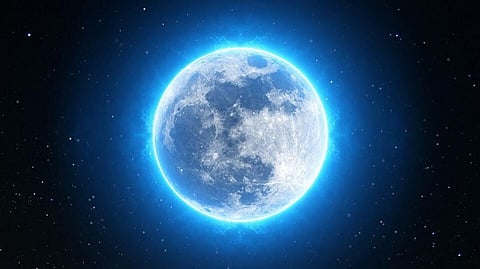
- Home
- न्यूजग्राम
- India
- World
- Politics
- Entertainment
- Culture
- Lifestyle
- Economy
- Sports
- Sp. Coverage
- Misc.
- NewsGram Exclusive
- Jobs / Internships

The forthcoming rare celestial event on January 31, in which three lunar events will come together in an unusual overlap called as 'super blue blood moon', will give scientists a special opportunity to understand the evolution of the surface of the moon.
The January 31 supermoon, which is the first blue moon of 2018, marks the last in a trilogy of supermoons. The first happened on December 3, 2017, NASA said in a report.
In addition, a lunar eclipse will take place in the morning on January 31, temporarily giving the moon a reddish colour known as a blood moon. Pixabay
The eclipse will offer researchers a chance to see what happens when the surface of the moon cools quickly, helping them to understand some of the characteristics of the regolith — the mixture of soil and loose rocks on the surface — and how it changes over time.
"During a lunar eclipse, the temperature swing is so dramatic that it's as if the surface of the moon goes from being in an oven to being in a freezer in just a few hours," said Noah Petro, deputy project scientist for NASA's Lunar Reconnaissance Orbiter, or LRO, at NASA's Goddard Space Flight Center in Greenbelt, Maryland.
Using the astronomer's equivalent of a heat-sensing, or thermal camera, the team will conduct their investigations at invisible wavelengths where heat is sensed, from the Haleakala Observatory in Hawaii,
These studies will help us tell the story of how impacts large and small are changing the surface of the Moon over geological time. Pixabay
"The whole character of the moon changes when we observe with a thermal camera during an eclipse," said Paul Hayne of the Laboratory for Atmospheric and Space Physics at the University of Colorado-Boulder.
"In the dark, many familiar craters and other features can't be seen, and the normally non-descript areas around some craters start to 'glow', because the rocks there are still warm," Hayne added. (IANS)
